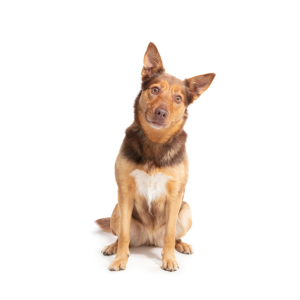Are you looking for ideas to make your furry friend’s life better?
We delve into the transformative realm of dog enrichment activities—an essential ingredient for nurturing happy, healthy, and well-rounded dogs. We lead busy lives and often it’s necessary for us to be away from home for long periods. But just like us, dogs like to be kept entertained and can easily become bored without enough to do leading to unwanted and destructive behaviours.
Enrichment is more than just a buzzword; it’s a commitment to providing an environment and activities that look after your dog’s physical, mental, and emotional well-being. In other words, finding ways to enrich your dog’s life!
Below are some ideas, but explore limitless possibilities by tapping into your imagination. Try to mix it up too – doing the same activity day after day lowers its value. When presenting a new challenge or food toy to your dog, start easy. Let them see you scatter the food, have the food in a ball that easily comes out etc. Then, slowly increase difficulty.
Enrichment toys
Interactive toys stimulate a dog’s natural impulses to chew, gnaw, chase, and forage. Not only do puzzle toys give your dog’s brain a workout, but they also allow your dog a positive sense of achievement.
- Snuffle Mat: A snuffle mat keeps your dog entertained and slows down their mealtimes. Simply sprinkle their favourite treats or mealtime kibble through the ruffled wing sections and let them find it when they are home alone for a long-lasting, tasty and brain-stimulating exercise!
- Kong: A Kong is a hard, rubber, snowman-shaped toy with a small hole on top and a large one on the bottom. It takes just a few minutes to stuff a Kong toy with food or treats and can occupy your dog for several hours, depending on your dog’s personality and interest level. As your dog works to remove food or treats from the Kong toy, they expend excess energy. Not only does this help reduce boredom, but it can also help alleviate anxiety. For a longer experience, freeze the Kong before giving it to your dog.
- Lickimat: A lick mat is a flat mat, designed for your dog to lick, over and over. They are usually coated with ridges and brittles that encourage licking. Since they are flat, dogs are not able to grab food with their teeth and must use their tongue instead. The result: it takes much longer to eat all the food and provides a fun and stimulating activity for your dog.

Chew toys
Chewing naturally increases a dog’s overall well-being. The repetitive action of chewing releases serotonin and dopamine, two important neurotransmitters in the brain that support mental health, and a feel-good vibe. Provide your dog with some long-lasting chews such as:
- Bully stick
- Goat horn
- Deer antler
- Kangaroo tails
DIY enrichment
Enrichment doesn’t need to be expensive, and you don’t have to spend money to get started. In fact, there are many things you can do using things you’ve already got at home!
- Rolled-up towels: Roll some treats into a towel or bathmat and let your dog unroll it to find the treats throughout. You can level up by tucking the end of the towel into a box or plastic container, so it doesn’t unravel as easily. Encourage the dog to interact with the towel to get to the treats.
- Frozen treats: Freeze some of your dog’s favourite treats into an ice block! Let them enjoy and uncover the treats within.
- Scavenger Hunts: Put your dog’s food or dried treats in multiple places around the house or your yard, or simply scatter it amongst the grass and let your dog search! You can start with just one room or a small area of lawn and level up by using your entire yard or house.
- Toy hide-and-seek: You can even teach them to find toys. Get them excited about a toy, then let them see you go hide it somewhere easy – say “go find” they get it and you play. Then you slowly make it harder. You could even choose two toys for them to play with each day.
- Recycling pit: Add loose cardboard boxes, empty toilet rolls, egg boxes, scrunched-up towels etc to a large box or shell pool and scatter food throughout. You can level up by adding some food into closed boxes, stuffing scrunched paper and food into tubes so there are multiple small puzzles within the bigger puzzle!
Get started with dog enrichment and tag us on social media to spread the joy!




 MON-SUN:
MON-SUN:
 02 9587 9611
02 9587 9611 INFO@SYDNEYDOGSANDCATSHOME.ORG
INFO@SYDNEYDOGSANDCATSHOME.ORG











Recent Comments